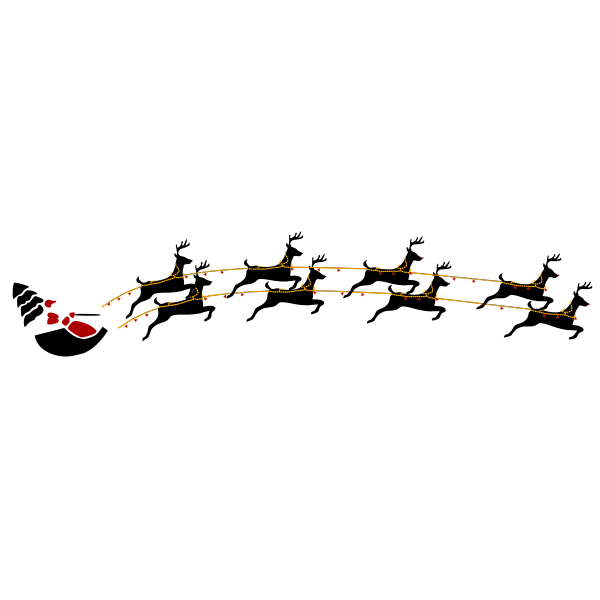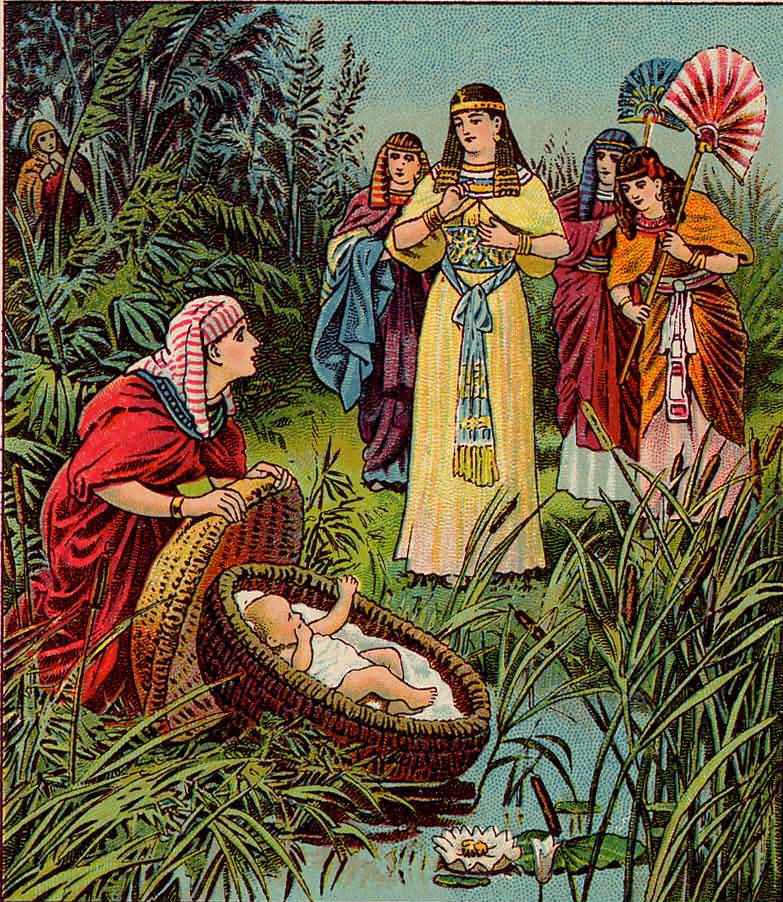Some Thor cosplayer on Gab tried to say Christmas is pagan because Santa used 8 reindeer to pull his sleigh around. The flying sleigh was from how Thor rode in a chariot pulled by two goats, the 8 reindeer was of course reference to Sleipnir, Odin’s eight-legged horse.
I meant to mock him right then and his fanclub, but I didn’t.
But, here’s my research on this, in case this pops up again for anyone else.
First, Santa Claus is post establishment of Christmas by centuries, it’s a non-starter.
But, we all know people are idiots, so here’s more.
The notion of Santa flying over rooftops is an old idea, but I couldn’t find how old. The earliest I could track it down was 1812 by Washington Irving using his nom-de-plume of Diedrich Knickerbocker. There’s a rule of thumb I’ve heard stating if some tradition is written down, you can usually count on it being around for around 2 centuries before then. So, that places it back to the 1600s and I can’t find anything that traces the legend back further than that. There might be, but I wasn’t able to find it. So, barring a documented trail back to at least the 1st century A.D., the establishment of Christmas has nothing to do with the later addition of Santa Claus and his flying sleigh.
The 8 reindeer and Sleipnir/magical goats. Maybe the anonymous author who appeared in William Gilley’s “A New Year’s Present, to the Little Ones from Five to Twelve Number III : The Children’s Friend” in 1821 was inspired by Sleipnir or maybe the magical goats. We don’t know, he didn’t offer anything else but a poem:
Old Santeclaus with much delight
His reindeer drives this frosty night.
O’er chimneytops, and tracks of snow,
To bring his yearly gifts to you.
He certainly liked reindeer but no reference to the number Santa used. And while goats do have horns, they look much different than reindeer’s.
The next reference was shortly there after in 1823 in the well-known “The Night Before Christmas”
When what to my wondering eyes should appear,
But a miniature sleigh and eight tiny reindeer,
With a little old driver, so lively and quick
I knew in a moment it must be St. Nick.
More rapid than eagles his coursers they came,
And he whistled and shouted and called them by name;
“Now, Dasher! now, Dancer! now, Prancer and Vixen!
On, Comet! on, Cupid! on, Dunder and Blixem!
To the top of the porch, to the top of the wall!
Now, dash away, dash away, dash away all!”
Ah, there’s the number 8! Still no reference to Sleipnir, though.
Let’s look at when Sleipnir appeared in written mythology.
“Sleipnir is attested in the Poetic Edda, compiled in the 13th century from earlier traditional sources”
Oh.
2 centuries back, using the rule of thumb, places Sleipnir around 11th century A.D.
If we squint really hard, we can go back to the 8th century : “Two of the 8th century picture stones from the island of Gotland, Sweden depict eight-legged horses, which are thought by most scholars to depict Sleipnir: the Tjängvide image stone and the Ardre VIII image stone. Both stones feature a rider sitting atop an eight-legged horse, which some scholars view as Odin.”
Still, hundreds of years after the earliest records of Christmas as Christian holiday.
Santa Claus has no connection to the foundation of Christmas and no solid connections to any Norse mythologies what is there is tenuous at best.
Christmas had been around since at least the 1-2nd centuries. We have St. Theophilus, Bishop of Caesarea (AD 115-181), writing “We ought to celebrate the birthday of our Lord on what day soever the 25th of December shall happen.”
(This ought to be taken with a grain of salt since the earliest source I could find is Rudolf Hospinian in his work “De festia Judæorum et Ethnicorum … festorum dierum Christianorum” published 1592-93)
Let’s say the quote from Theophilus isn’t accurate in that he made it all since it’s hard to pin down a concrete source. We do, however, have many more sources, one the more interesting ones is the Cyprianus Carthaginensis – “De Pascha Computus”, written in 243 by an African writer.
The “De Pascha Computus” was a book of calculations to determine Passover and the birthday date of Christ. Using assumptions of the Jewish calendar, the “Computus” arrived at March 28th. A far cry from December’s date, but, once again applying our rule of thumb, we’re well within Christ’s lifetime, meaning His birth had been celebrated since His life and ministry had ended, even if some early Christians were still noodling around with the date.
Another source is in Liber Pontificalis wherein we read “Pope St. Telesphorus (125-136) instituted the tradition of celebrating midnight Mass, which means Christmas already was being celebrated.”
Also of note is when Emperor Constantine made Christianity legal 313 A.D. the Church formalized a number of feast days based on current practices of the early members. One of these was Christmas on December 25th.
What then of the pagan holiday of “Birthday of the Unconquered Sun” falling on December 25th?
We have two Roman Emperor’s throwing their support behind this, the first was Emperor Aurelian who, in 274 A.D., started celebration. We know the rule of thumb doesn’t apply here since he was the one that ordered the establishment of that event. Since we have evidence the Church was already celebrating Christ’s birth on that date, it’s not a huge stretch to suggest Emperor Aurelian was trying to over shadow Christ’s birth.
The second, and last, time that festival was enforced was by Emperor Julian the Apostate during his short reign of 361-63. Julian had been Christian, apostatized and embraced paganism. It’s no wonder he would try to suppress or even eliminate Christianity. After his death, the festival was once again discarded.
If anything, certain Christmas customs outside of the religious observation might have been drawn from Saturnalia, a festival dedicated to the Titan Saturn, originally held December 17th but then later expanded out to the 23rd. During the feast days, Romans went around visiting friends, exchange food and drink, and exchanging gifts. The social norms were reversed. For example, the slaves were allowed to talk back to their masters, and the masters would hold a huge feast, letting the slaves eat first. See Merry Old England’s Christmas season celebrations for how that had been adapted to other lands and cultures. See more here
See here, too, for another summary of some of the same points, I used it for the dates of the poems.
Historically, there’s far more evidence that Christmas was always about the celebration of Christ than it was the co-opting of a pagan festival for Christian purposes.
Merry Christmas!

How Christmas Was Christian From The Start
7 Comments
Leave a Reply
Latest from Culture

Dangerous Left Wing Rhetoric
On Saturday, July 13, 2024, an assassin came within inches of murdering Donald Trump on a live broadcast. Democrat talking heads immediately split into two camps: some said Trump staged the shooting

Movie Review: Streets of Fire
Underrated. Yes, the acting is forced, the lines are flat, the sets limited, but it makes up for it by being awesome. It's more of a modern Western than anything.

Calvin Coolidge on Independence Day
Speech Given July 1926 We meet to celebrate the birthday of America. The coming of a new life always excites our interest. Although we know in the case of the individual that

Edward the Black Prince
"Valiant and gentle...the flower of all chivalry in the world at that time.”

The Weimar Years – Part 5
Summary of the German Revolution, 1918-1919.




“We have St. Theophilus, Bishop of Caesarea (AD 115-181)”
Doesn’t appear in Philip Schaff’s collection of church fathers so is questionable. And even those that do, like Irenaeus from 180 AD, all the manuscripts are from the 9th century. Church fathers then can prove nothing. It seems obvious Chriatmas was made after the Notse territories were forcibly converted in the 10th century. So what? A pagan Christianity is better than a Jew-loving one. The problem with American Christianity is its Jewophilia has made it more pagan than it would be if it were actually pagan.
Concur, the Jewification of Christmas is disgusting.
That the Jewish Moloch Worshippers hate Christmas is enough to utterly adore it!
“Doesn’t appear in Philip Schaff’s collection of church fathers so is questionable.”
Yeah, I called that out:
‘(This ought to be taken with a grain of salt since the earliest source I could find is Rudolf Hospinian in his work “De festia Judæorum et Ethnicorum … festorum dierum Christianorum” published 1592-93)’
“It seems obvious Chriatmas was made after the Notse territories were forcibly converted in the 10th century. ”
It’s not obvious at all, in fact I just argued the opposite, Christmas was already being celebrated in December as early as the 2nd century and quite likely earlier than that.
“Another source is in Liber Pontificalis wherein we read “Pope St. Telesphorus (125-136) instituted the tradition of celebrating midnight Mass, which means Christmas already was being celebrated.”
Without a doubt, the baptized brought their customs and celebrations into the Church, no longer pagan just as they were not anymore either.
You may also wish to take a look at the Catholic Encyclopedia, 1913 edition, entry for “Christmas” which looks at various theories on the origin of the date, name, customs, etc.:
https://www.newadvent.org/cathen/03724b.htm
Also, I’d like to clear up some confusion found in the USA. Santa Claus is also referred to as “Kris Kringle”, perhaps most prominently in the movie “Miracle on 34th Street”. “Kris Kringle” is an Americanization of “Christ Kindl”, the German diminutive for “Christ Child”. In German nations, the Christ Child brings Christmas presents, not Santa Claus. So, it’s easy to see, based on gift giving, the two were made equivalent in the USA with the large German population here.
In any event, “Christ Child” and “Saint Nicholas” don’t make good secular ad copy for a secular season of buying and selling. Santa Claus has been secularized in the USA while Germany has made a similar attempt with the gift giver being the “Weihnachtsmann” (i.e. “Christmas man”). A former East German once told me the communist government there tried to take it a step further by having “Father Frost” bring presents. Lenin forbid that “Christmas” be mentioned.
Unfortunately, the USA has a long list of top “Christmas” songs that have absolutely nothing to do with Christmas. Europeans, on the other hand, have mainly true Christmas songs, even outside of church.
Excellent points
Perhaps the Bible should be your guide and not men.
And the commenters hatred of Jews!? Wow.
Was not the Messiah a “Jew”?
Start to finish there is no instruction to celebrate his birth. As well as the direct command not to add to or take away from his book.
Which the Catholic , orthodox , and Protestant “churches” gleefully do with abandon. Be humble and reread the Bible and he will guide you . That would be almighty God. If you were inclined to wonder.
‘Was not the Messiah a “Jew”?’
No, He wasn’t. He was the house of Judea, the royal house of David, but He wasn’t anything like those He called the children of the devil, or like what we call Jews today.
You’re conflating Scriptural truths with humanity’s constant wrestling with the Divine and how to worship the Almighty. The celebration of Christ’s birth, Christmas, has always been Christian, no matter if rooted in Germanic culture or Mediterranean culture, the intent and effect has always been Christian.
“Be humble and reread the Bible and he will guide you.”
And yet you have no idea what’s in it or why. Please take your overweening hubris and faux moral superiority elsewhere.